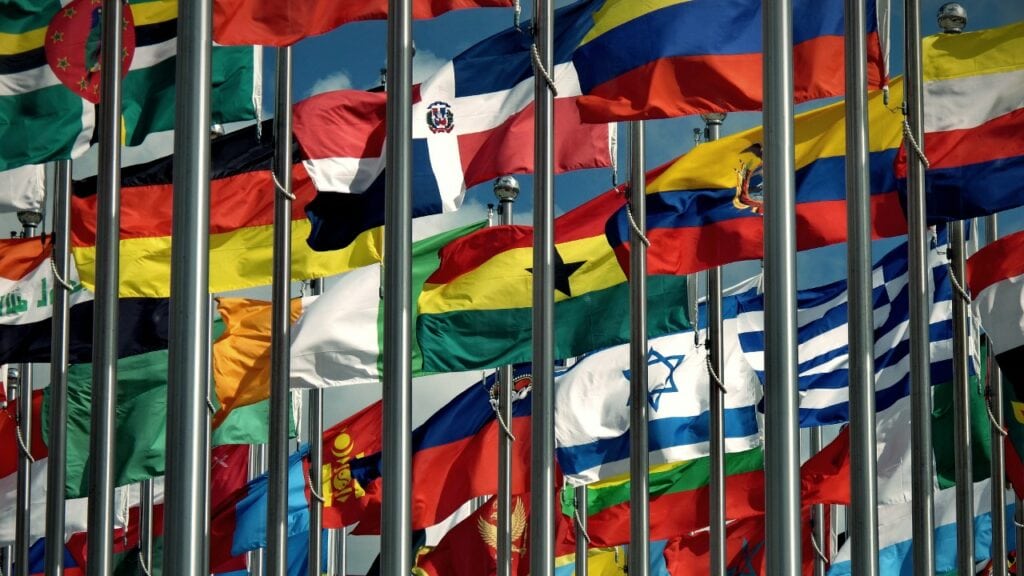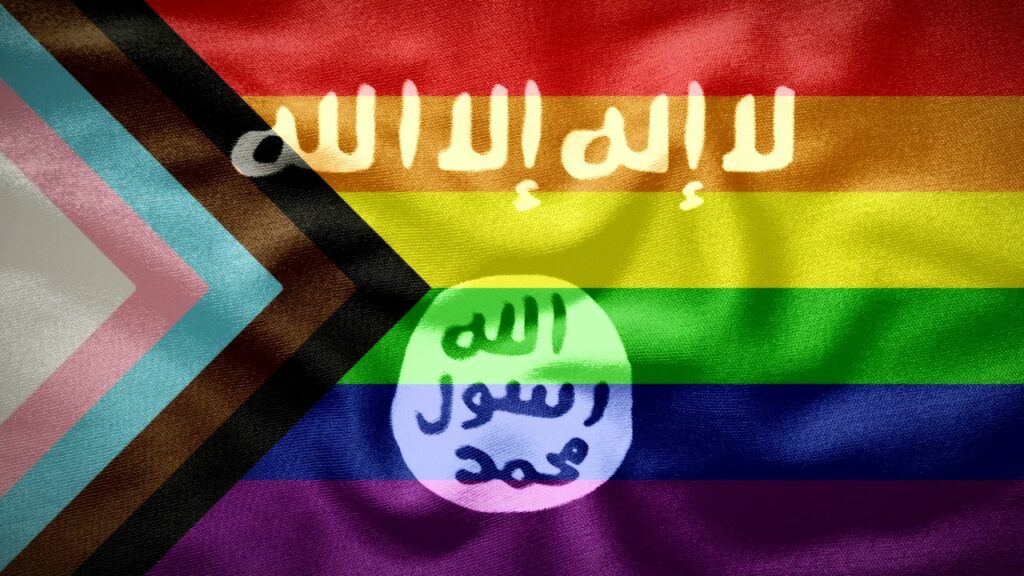As primitive means for long distance communication, flags are one of the cruder forms of language if not the crudest. The purpose of a flag is simple – conveying information visually. Be it an identity or a signal, in order for it to be effective, any flag must convey said information in the clearest and leanest way possible. The perfect example – a white flag.
Saying that flags are symbolic is an understatement. Not only are they symbols as a whole, but every shape and color on them was chosen carefully and is meant to represent something. Each flag tells a story and today we are going to look at the ongoing story of the Middle East conflict as it is told by two flags – one from each side.
The word flag in Hebrew
The common word for flag or banner in Modern Hebrew is דֶּגֶל (degel). In literary Hebrew we may also find the word נֵס (nes) in sense of flag, though in colloquial Hebrew it means miracle.
The word דֶּגֶל (degel) also didn’t always mean flag. In Biblical Hebrew it is mostly understood as an army unit or a brigade, and it’s not hard to see why from that meaning it also gradually evolved to mean a flag or a banner. However, there are some who believe it originally meant a flag or a sign (possibly even a divine sign). To support that claim they point to the Akkadian verb dagalu which encompasses meanings related to looking and appearing.
The shorsh of the word דֶּגֶל (degel) is ד-ג-ל (Dalet-Gimel-Lamed) and from it we get two other very cool words. The first one is the adjective דָּגוּל (dagul) which is used to describe greatness in people in the sense they are outstanding individuals, and everyone looks up to them. The second word is the verb דָּגַל (dagal) which means to openly adhere and promote certain ideas, to publicly believe and stand for certain values, or in other words – to (metaphorically) etch something on a flag and then wave it around for everyone else to see.
Keeping all that in mind, let’s now take a look at the flags of two very prominent countries in the Middle East and see what symbols, values, ideas, and identities they chose to hoist and let fly for the entire world to see.
The flag of Israel
Let’s start with the flag of the only Jewish state. The Israeli flag was created in 1885 in my hometown of Rishon Lezion and despite the tiny size of Israel, it is still one of the most recognized flags in the world.
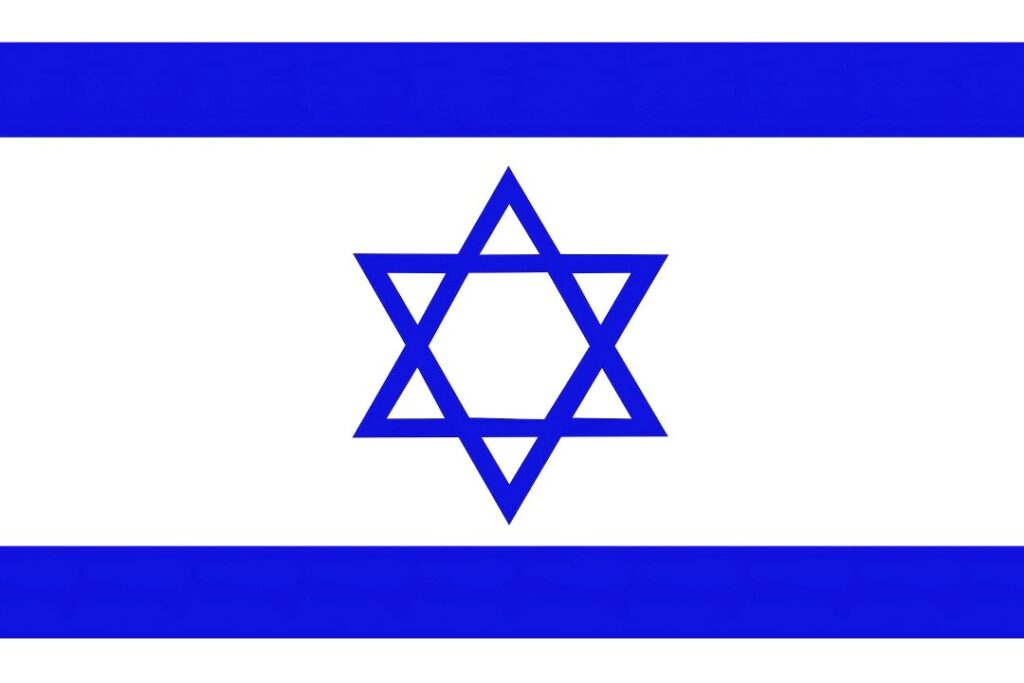
It has two thick blue stripes, one at the top and one on the bottom. Unlike what you may have heard, these stripes do not represent rivers or any other body of water. The meaning they carry is spiritual rather than geographical, and they were borrowed from the design of the tallit – the garment religious Jews cover themselves with while praying.
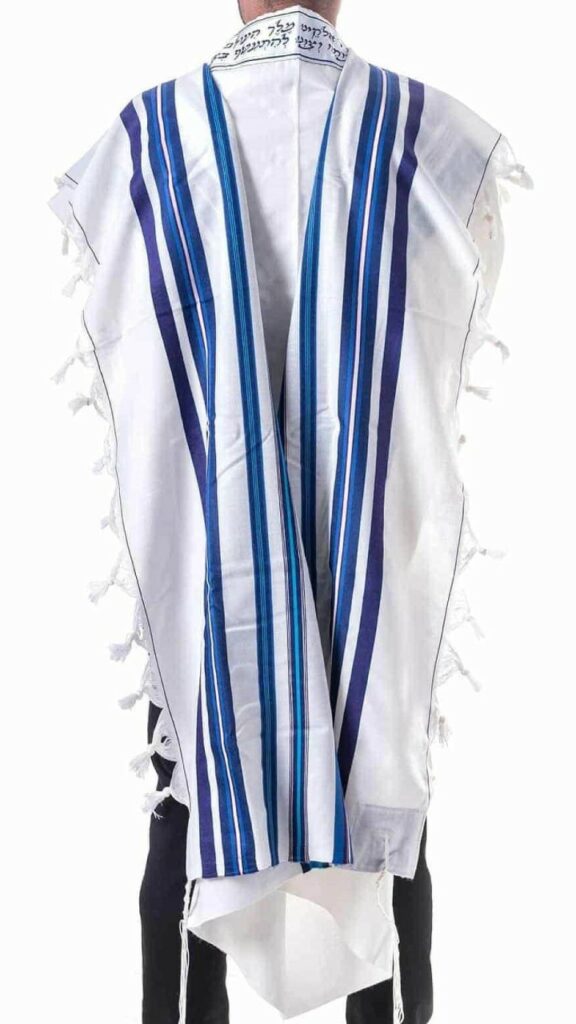
There is a folk explanation in Israel that our flag is an illustration of the Exodus story. According to this explanation, the stripes represent the parting of the Red Sea and the Jewish star in the middle represents the Hebrews crossing it in between as they walk towards their freedom. But that’s all that it is – unsubstantiated folklore. Very nice folklore, but folklore nonetheless.
The symbol in the middle of the flag is the Star of David. In Hebrew it is known as מָגֵן דָּוִד or Magen David, which literally means The Shield of David.

(Rudi Weissenstein – The PhotoHouse)
Even though we cannot say for certain that this symbol actually appeared on the Shield of King David or his soldiers, there is no denying that this particular shaped has been associated with Jews and Judaism for centuries, particularly in Europe where Zionism was founded.
Now let’s take a look at the flag of where Islam was founded.
The flag of Saudi-Arabia
Saudi-Arabia is the cradle of Islam. Before we take a look at the Saudi flag itself, I just want to quickly address the question of why drag Saudi-Arabia into this, and my answer is that I am not the one doing the dragging. Watch this clip and pay especially close attention to what is self-proclaimed about the Palestinians at the 0:39 and 0:56 marks.
When it serves their interests, and especially when they think the world is not looking, even Hamas officials admit the truth about the Palestinians formerly known as Arabs – they came to Palestine from other places, most notably Egypt, the Arabian Peninsula, and the Levant. Now we can move on the the Saudi flag.
The Saudi flag has a green background, and on it inscribed in white is the Shahada – “There is no god but Allah; Muhamad is the messenger of Allah”. It is pretty much identical to the flag of the Islamic Resistance Movement better known as Hamas, but with one small yet very symbolic difference – the sword under the inscription.
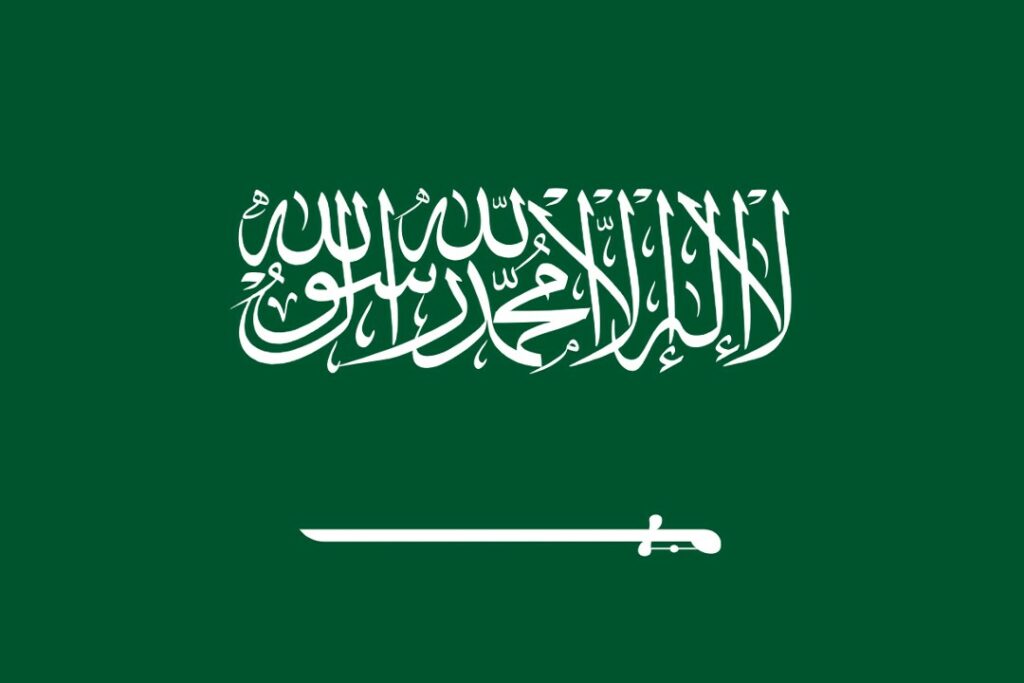
There is a reason why Islam, the youngest among the three monotheistic religions, spread so quickly all over the world, and let me assure you it wasn’t the coherent arguments of its proponents. The expansion of Islam was mostly achieved through violent conquests, bloody battles, brutal wars, and persistent occupation of the greater part of what is now known as the Muslim World.
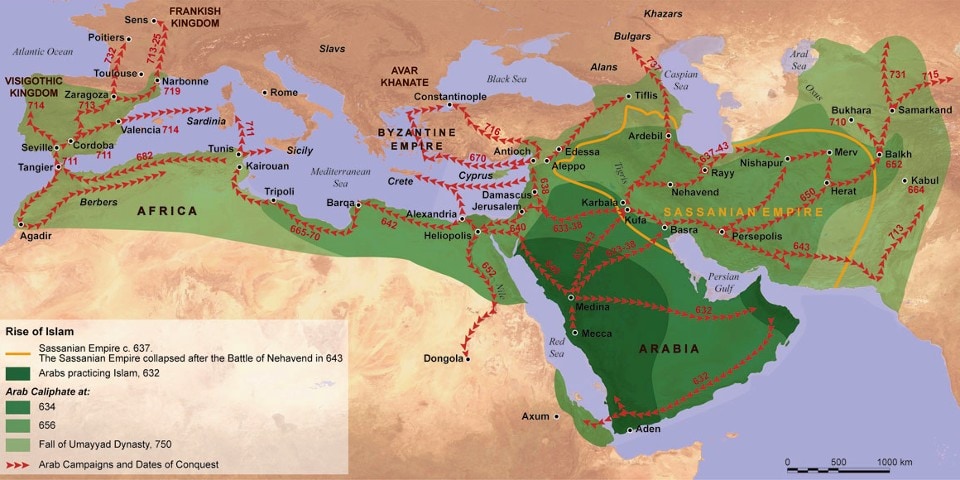
The Middle East, North Africa, Central Asia, and even parts of Europe, all at one point fell before the sward of Islam. By the way, here is another fun fact for you – the Sword of Islam is also the name of a ceremonial sword Mussolini received as a gift from the people of Libya.
The “flaggerbasting” truth
The flags of Israel and Saudi-Arabia reveal one simple truth – who is the real aggressor in this ongoing conflict. Islam, the religion of peace, associates itself with a sword. Judaism, on the other hand, is associated with a shield named after a king who predates Islam by over 1500 years.
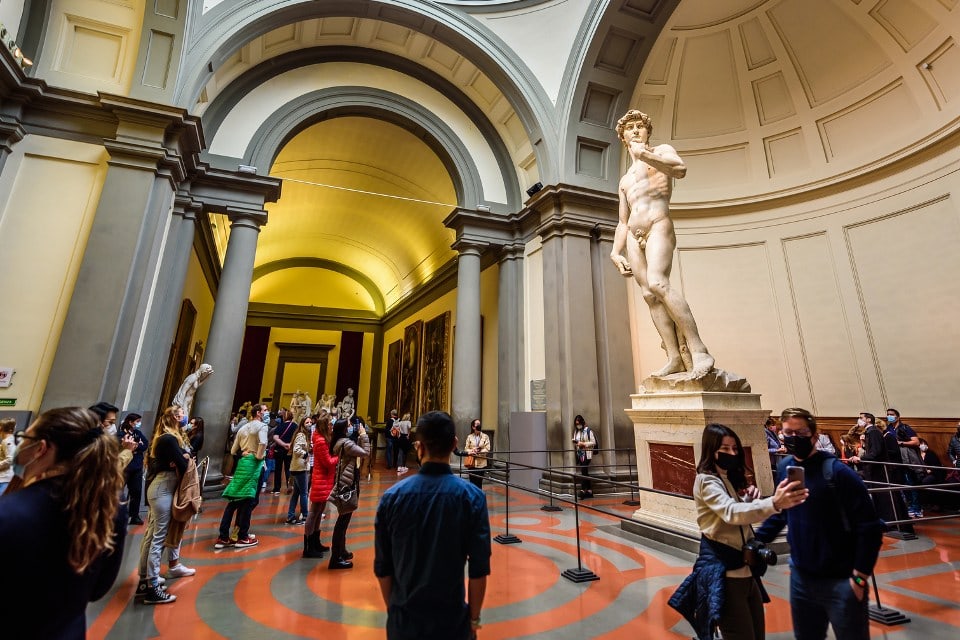
Jews are merely shielding a tiny sliver of land they see as their historical homeland. And no matter how far they were away from it, they never tried to convert the local population into their own religion. Because unlike Islam, which is a proselytizing religion to its very core, Judaism actually discourages it. That is exactly why you have only 15 million Jews in the world and 1.5 billion Muslims.
Bonus round – The Palestinian flag
Some might say that I am being dishonest and specifically chose the flag of Saudi-Arabia because it suits the narrative I wish to promote. They might even add that if I showed the Palestinian flag everyone could see that it has no weapon on it – neither offensive nor defensive. That is actually a valid point, so here it is:
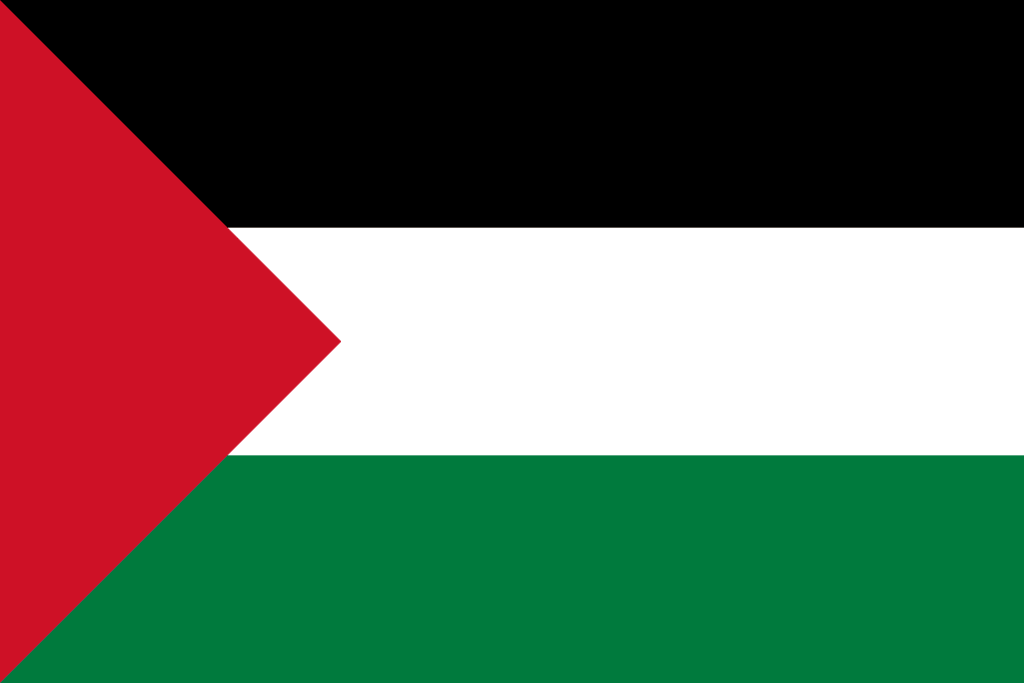
But you know what? The flag above is not actually the Palestinian flag. Because while nowadays it is commonly known as the Palestinian flag, the image above is actually the flag of the Kingdom of Hejaz from 1920 to 1926. And where was this kingdom situated? On the eastern part of the Arabian Peninsula, which (for the most part) is now a part of – you guessed it – Saudi-Arabia.
Stay in Touch!
Get the next post from Hebrew Monk directly to you inbox!
Don't like emails? Subscribe to Heberw Monk's Telegram Channel instead.

